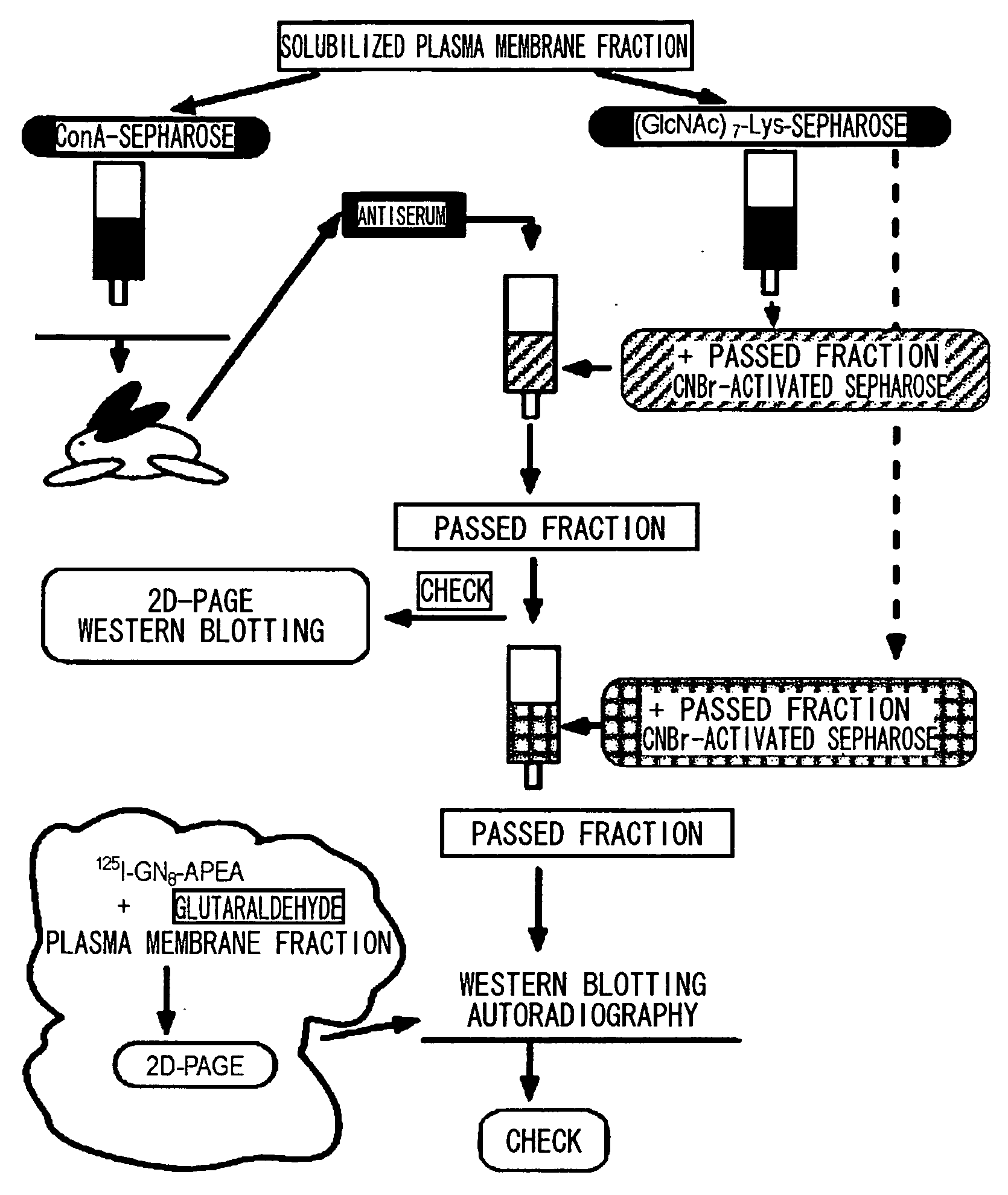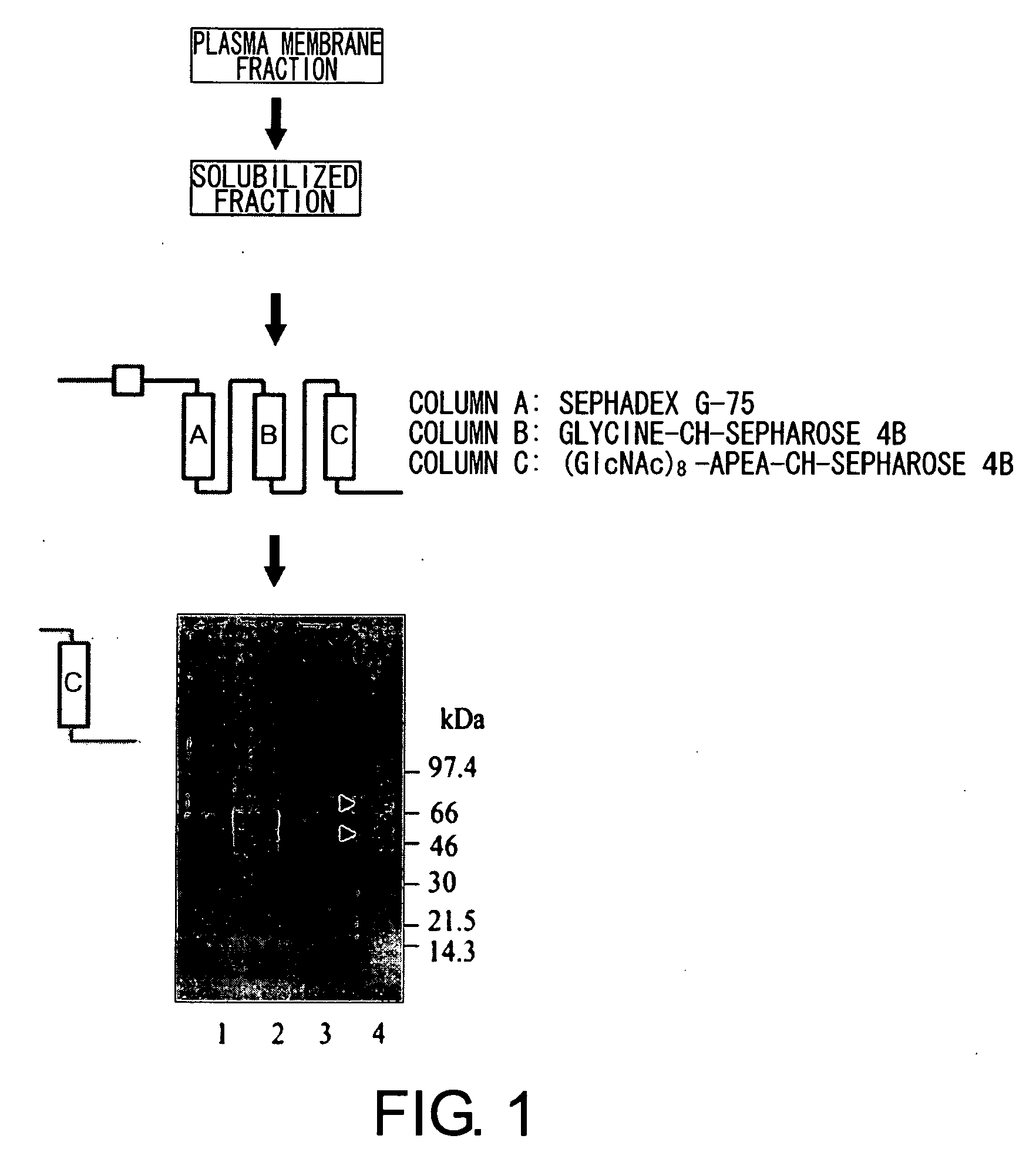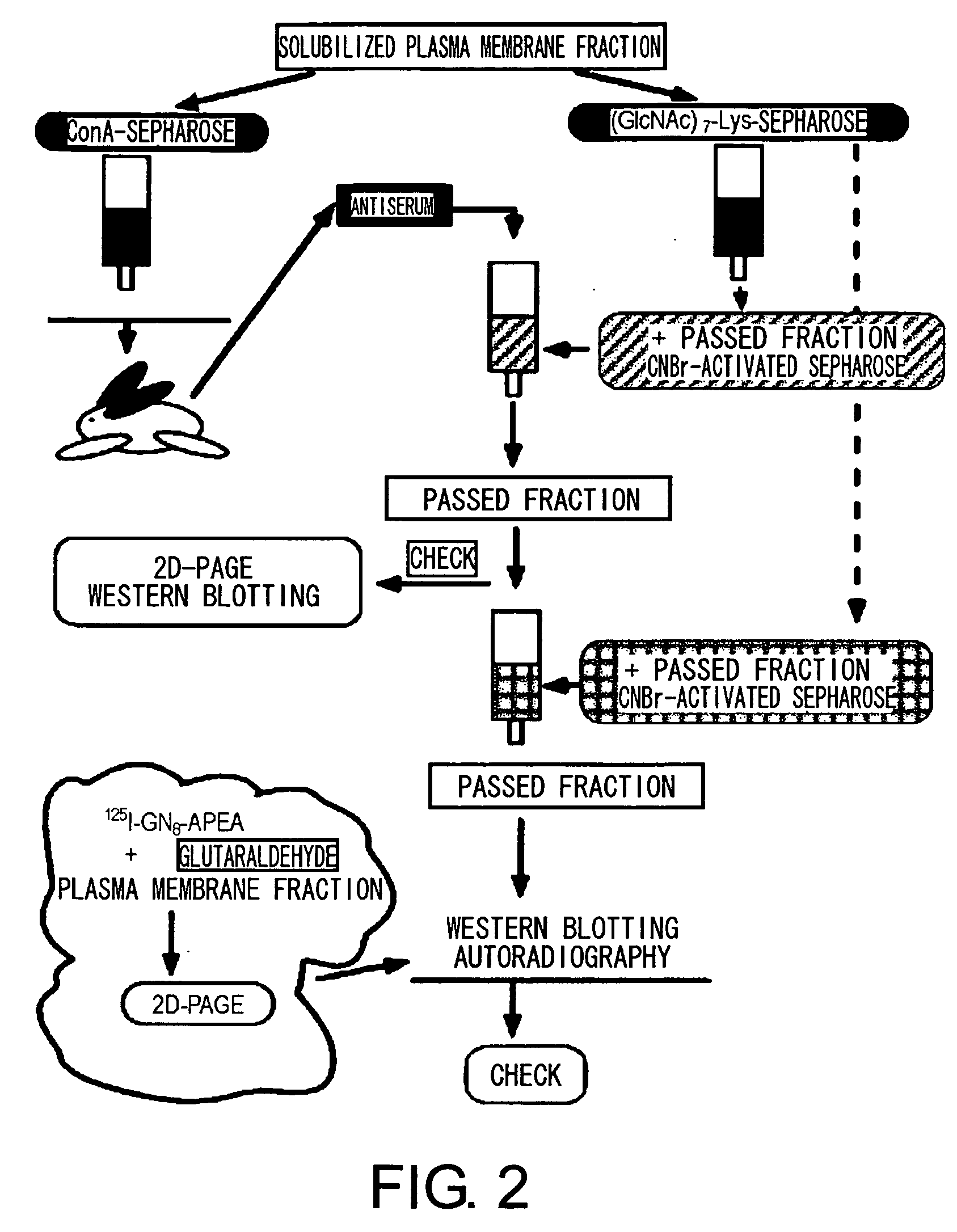Chitin Oligosaccharide Elicitor-Binding Proteins
- Summary
- Abstract
- Description
- Claims
- Application Information
AI Technical Summary
Benefits of technology
Problems solved by technology
Method used
Image
Examples
example 1
Purification and amino acid Sequence Analysis of Chitin Elicitor-Binding Proteins
[0105] The affinity column used for CEBiP protein purification was prepared by immobilizing each of the (GlcNAc)8-APEA derivative (75 mg) and glycine onto an activated CH-Sepharose 4B gel carrier (5 g of dry gel), following the manual provided by Pharmacia.
[0106] Purification of CEBiP was carried out as follows: the plasma membrane fraction (20.46 mg) was reacted in a TBS buffer (2 mM DTT, 1 mM PMSF, 0.15 M NaCl, 1 mM MgCl2, 25 mM Tris-HCl buffer (pH 7.0)) containing 0.5% Triton X-100 at 4° C. for one hour, and the supernatant obtained from a table top ultracentrifuge (4° C., 70,000 rpm, one hour) was used as a solubilized plasma membrane fraction.
[0107] Surfactants such as TritonX-100 and n-dodecyl-β-maltoside were effective for solubilization of the elicitor-binding protein from the cultured rice cell plasma membrane. 60% of the plasma membrane protein was solubilized by 0.5% Triton X-100, and when...
example 2
Preparation and Purification of Anti-Con A-CEBiP Antibodies
[0113] CEBiP is a glycoprotein that binds to concanavalin A (Con A). Therefore, antisera were produced against a rice plasma membrane fraction that binds to a Con A column, and various chromatographies were devised to purify an antiserum (anti-Con A-CEBiP antibodies) against the fraction comprising the present target protein.
[0114] Anti-Con A-CEBiP antiserum was prepared by the following procedure: a Con A-Sepharose column was used to prepare Con A-binding total proteins found in the solubilized rice plasma membrane fraction. Using this as an antigen, rabbits were immunized to obtain an anti-Con A-bound fraction antiserum.
[0115] This antiserum was purified by the following method (FIG. 2): columns onto which the fraction that passed through (GlcNAc)7-Lys-Sepharose and the fraction eluted with non-elicitor sugars (chitosan hexaose and cellohexaose) prepared from the rice plasma membrane fraction were each immobilized were ...
example 3
Inhibition Analysis of Reactive Oxygen Production Response Using the Antiserum
[0118] Protoplasts were prepared from cultured rice cells, and the effect of the anti-Con A-CEBiP antibodies on elicitor-responsive reactive oxygen production was examined.
[0119] Rice protoplasts were prepared by the following method:
[0120] Cultured rice cells were strained through a metal mesh. Four days later, these cells were placed into 14 mL of 0.1% CaCl2, 0.02% MES, 9% Mannitol solution (pH 5.6) containing 2% Cellurase RS (Yakult) and 0.05% Pectolyase Y-23, and then gently shaken at 30° C. for six hours. Cells were filtered through a 25 μm nylon mesh, and the cells on the mesh were washed with 20 mL of Washing buffer (0.1% CaCl2 / 0.4 M Mannitol) (Nishimura, N., Tanabe, S., He, D.-Y, Yokota, T., Shibuya, N. and Minami, E. Plant Physiol. Biochem., 39, 1105-1110 (2001)). The protoplasts were collected into a 50 mL Falcon tube and recovered by centrifugation at 600 rpm for five minutes. Washing buffer ...
PUM
| Property | Measurement | Unit |
|---|---|---|
| Electrical resistance | aaaaa | aaaaa |
Abstract
Description
Claims
Application Information
 Login to View More
Login to View More - R&D
- Intellectual Property
- Life Sciences
- Materials
- Tech Scout
- Unparalleled Data Quality
- Higher Quality Content
- 60% Fewer Hallucinations
Browse by: Latest US Patents, China's latest patents, Technical Efficacy Thesaurus, Application Domain, Technology Topic, Popular Technical Reports.
© 2025 PatSnap. All rights reserved.Legal|Privacy policy|Modern Slavery Act Transparency Statement|Sitemap|About US| Contact US: help@patsnap.com



